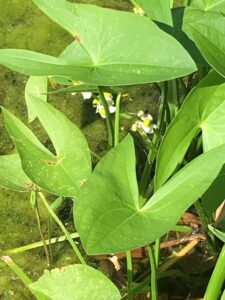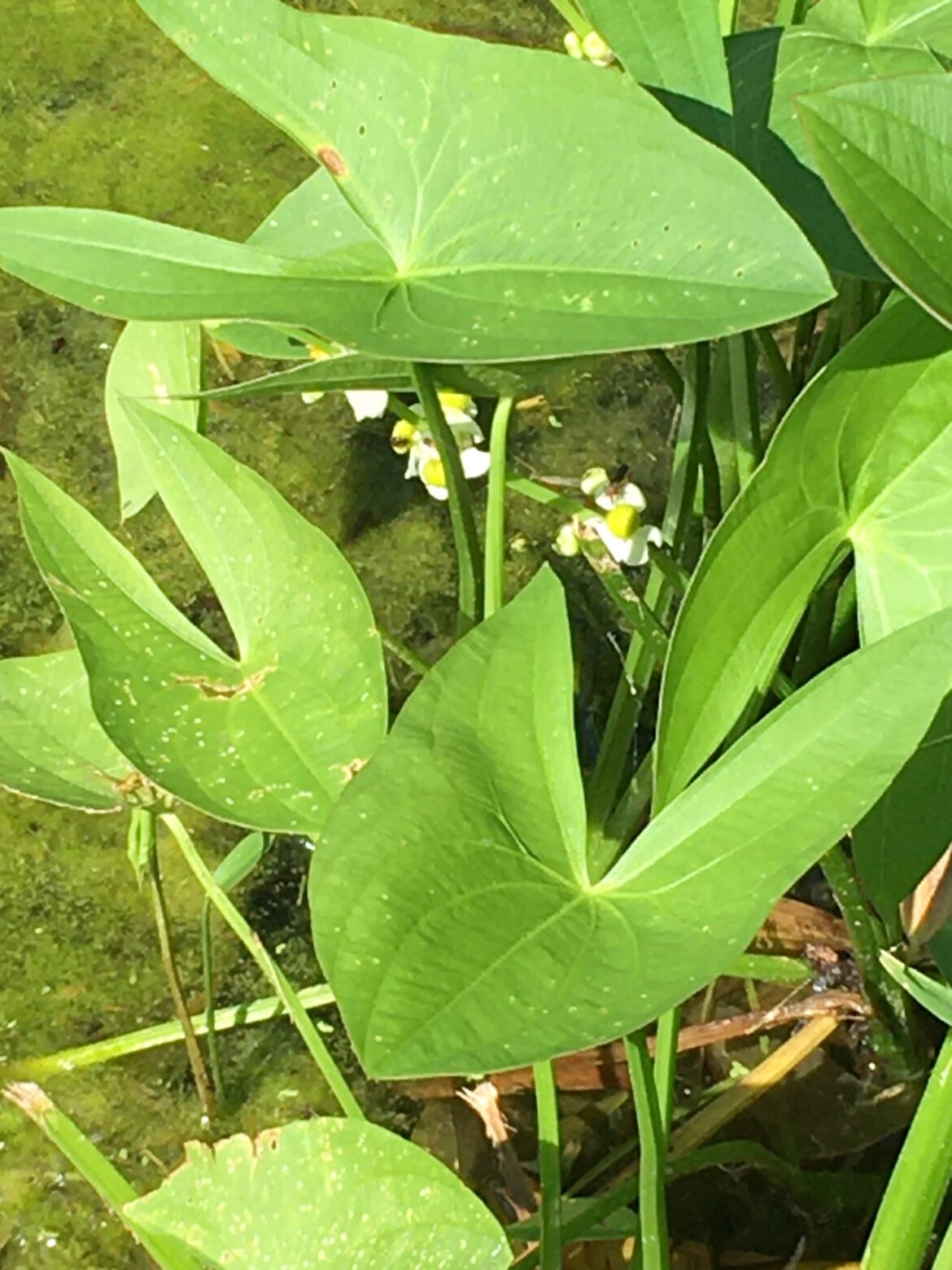August 16th
The 228th Day of the Year
O, greenly and fair in the lands of the sun,
The vines of the gourd and the rich melon run..
John Greenleaf Whittier
Sunrise/set: 5:47/7:31
Day’s Length: 13 hours 44 minutes
Average High/Low: 84/63
Average Temperature: 73
Record High: 98 – 1965
Record Low: 47 – 1963
Weather
This date brings a 30 percent chance of highs in the cool 70s, a 55 percent chance of 80s, and a 15 percent chance of 90s. Chances of a shower as well as for totally cloudy skies are 30 percent. Nights in the 40s come one year in ten, 50s three in ten.
Natural Calendar
As the Sun moves toward its halfway point to equinox, frost season opens in the Northwest, and snow will soon be falling into Hudson Bay. Elderberries are ready for wine throughout the country.
Daybook
1982: To Wisconsin: Goldenrod seen in western Ohio and again in northern Indiana. Maples are turning in Madison, Queen Anne’s lace, chicory, spurge, white snakeroot, burdock, great mullein, black-eyed Susans, sundrops, Joe Pye weed, trumpet creepers all blooming close to Yellow Springs levels. Motherwort flowers are shriveled and prickly like at home. Heavy goldenrod bloom on the way north to Marshfield.
1983: Cape Hatteras and Okrakoke Island: Ragweed and pokeweed common and at the same stage as in Yellow Springs. Yarrow still in bloom, but fading. Lamb’s quarters, remnants of pepper plants, small-leafed purslane and water hemlock are open, thin-leafed tick trefoil in bloom, and meadow beauty, white-top sedge, small-flowered partridge pea, some goldenrod, sea pink, too.
1986: Goldenrod just barely turning along Grinnell Road.
1990: Katydids begin at 7:57 p.m.
1999: The hummingbird comes to the rose of Sharon again at 6:15 a.m.
2000: One black walnut tree on the way to Fairborn completely bare.
2001: Cardinals two minutes late this morning, sing at 5:22 a.m. Doves follow at 5:24, crows at 5:27. Jay at 5:38. Squirrel at 5:45. The neighborhood quieting by 6:00, silent by 7:00.
2003: Portland, Oregon: Resurrection lilies seen in full bloom on the way to the airport. Returning to Yellow Springs after a week out west: A cottonwood tree along the freeway is half turned. At home, Joe Pye and phlox are still in bloom. Ironweed has opened. Zinnias and dahlias have replaced almost all the day lilies. Royal Standard hostas are blossoming; they were just budding on the 9th when we left for Oregon.
2004: Tussock moth caterpillars are eating Greg’s butterfly weed.
2007: Return from Portland. Some turning of the trees there, perhaps because of drought. Yellow coneflowers, a variety of the rudbeckia speciosa in full bloom throughout Portland. Most phlox gone now here at home; yellow coneflowers have become the dominant planting, make Yellow Springs and Portland seem to be at the same point in the year. This morning, it was quiet at 5:00 a.m. Robins began to chirp at about 5:10, cardinals at 5:20, then all the calls stopped at 5:40. A new brood of cabbage butterflies seen at the purple speedwell – at least nine at one time. Monarchs and tiger swallowtails at the zinnias and tithonia throughout the day.
2008: From Iowa down to Moraine View State Park near Bloomington, Illinois: Small flock of starlings seen along the route – the first so far this Late Summer. The land continues bright and lush, the corn tall and strong, the soybeans unbelievably green. Queen Anne’s lace dominates the roadsides as sunflowers and clovers disappear. Ironweed is relatively common throughout, as are some gray-headed coneflowers, goldenrod and probably wingstem. Field thistles are both budded and blooming. Now that we are back along the 40th Parallel and have come down from the high plains, Yellow Springs time controls the landscape. And – if anything appeared clear throughout all this trip – it is the broad applicability of the Yellow Springs world to the entire nation.
2009: Again the tiger swallowtail that has frequented our butterfly bushes floated down from the high white mulberry tree this morning and began working the purple blossoms. In the alley, a few of Mrs. Timberlake’s orange lilies still flower. The black walnut tree behind Jerry and Lee’s house is turning and shedding. A bat found dead in the lawn this afternoon. An August hosta transplanted to under the east apple tree.
2010: Robins around 5:00, crows raucous at 5:23 until about 5:30, occasional calls for another ten minutes. Robin singsong lasting throughout much of the morning. The butterflies came early today, tiger swallowtails, spicebush, fritillaries, monarchs. At noon, there were three spicebush, a tiger swallowtail, a monarch and a fritillary in the flowers. Driving in the countryside, we saw four monarchs.
2011: No robins for weeks, it seems, but cardinals still sing around 5:15, and crows came through this morning at 5:35, exactly the same time as yesterday morning. Three male tiger swallowtails on the butterfly bush this morning, the most at one time so far this year. One common buckeye came by also, a sign of Late Summer in Ohio, as the buckeyes migrate north, crossing the Ohio River in August. Yellow leaves spotting the birch tree near the park, and one black walnut tree on Fairfield Road. Sparrow fledglings still begging for food through the afternoon. On my walk tonight with Bella, field crickets were the most common sound (near 7:00 p.m.) for the first time, the tree crickets holding back (then exploding with the katydids after dusk. First orb-weaver spider seen tonight by the front window.
2012: Robins singing from 5:08 – maybe a little earlier – this morning. Few cardinals until after sunrise. One tiger and two spicebush swallowtails seen at random today. Two Judas maples seen on the way to and from Beavercreek. Phlox down to maybe a fourth of their blossoms. Some people have reported Joe Pye flowers gone to seed. Lynn brought a small bag of peaches from her trees, said they had been coming in for maybe a week. Our first windfall peach is almost ready to eat.
2013: Inventory at home after a few days in Madison, Wisconsin: Lily patches all overgrown, but naked ladies/resurrection lilies still flower. Dahlias, butterfly bushes, Shasta daisies, the tall red and the tall pink hibiscus, Royal Standard and other August hostas, Joe Pye, late phlox, very late spiderwort, re-bloom of Indomitable Spirit hydrangea and some Knock-out roses offer most of the perennial color. Heliopsis and monarda almost completely gone. Peaches late this year, still hard, maybe three-quarters developed. Butterflies: one monarch (the first of the year here in the yard), a spicebush, Eastern Black, a male tiger swallowtail, numerous silver-spotted skippers and cabbage whites. Moya’s August hostas are in full bloom, and Peggy’s virgin’s bower has its first flowers.
2014: At the Monastery of St. Clare near Cincinnati: The woods mostly bare of any flowering plants, but the edge of the property contained smartweed with white, wavy stems, a lush clump of horse nettle with white flowers, and several lanky, very elegant plants, very much like upland boneset (Eupatorium sessillifolium) but with longer leaf stems than shown in my references (therefore not “sessile” or clasping). And also flower stems in the bracts. This afternoon at home I heard an exquisite robin valediction, a long warbling song that seemed to bring together so much emotion about the passing summer.
2016: A cardinal woke me up at 5:30 this morning, both of us sleeping late. More precipitation throughout the day. This afternoon, I cut back one patch of zinnias that had toppled from the rain, cut all but four of the Shasta daisies. Now the heliopsis flowers are almost completely gone, and the zinnias that held up through the storms need to be clipped to encourage more blossoms. One male tiger and a hummingbird in the tithonias today in spite of the rain.
2017: One Judas maple seen near Keuka Lake in New York, one Virginia creeper with red-purple edges on some of its leaves. Fog low across the lake at sunrise, lasted several hours.
2019: Small murmurations of starlings seen on a drive to Columbus this afternoon.
2020: Fog and cool this morning, sense of fall. In the tithonias and zinnias: at least one tiger swallowtail, silver spotted skippers and a monarch throughout the day. At Ellis, two monarchs seen, and the arrowhead is blooming along the shore.. At home, the trumpet creeper vine still has one blossom. The resurrection lilies are down to five plants, a dozen flowers.
Old wortermelon time
is a-comin’ round again.
James Whitcomb Riley



Hi Dad!
I enjoyed this day’s entries! Can’t believe you have so many years worth of info! very cool!
Love you!
Jeni
Hi, Jen – Glad you get these updates! I’m going for 50 years of notes! See you tonight.
Love you, Dad